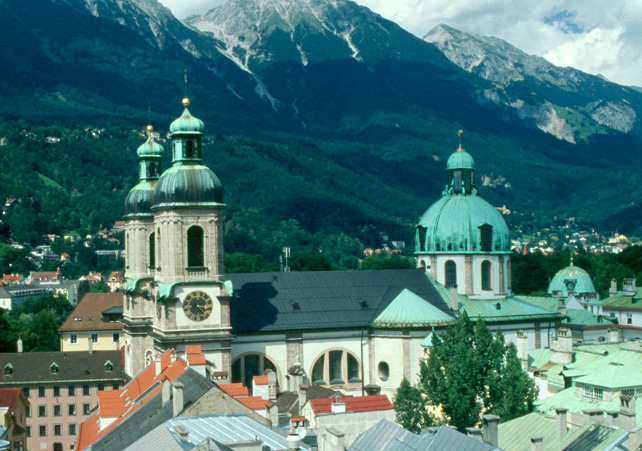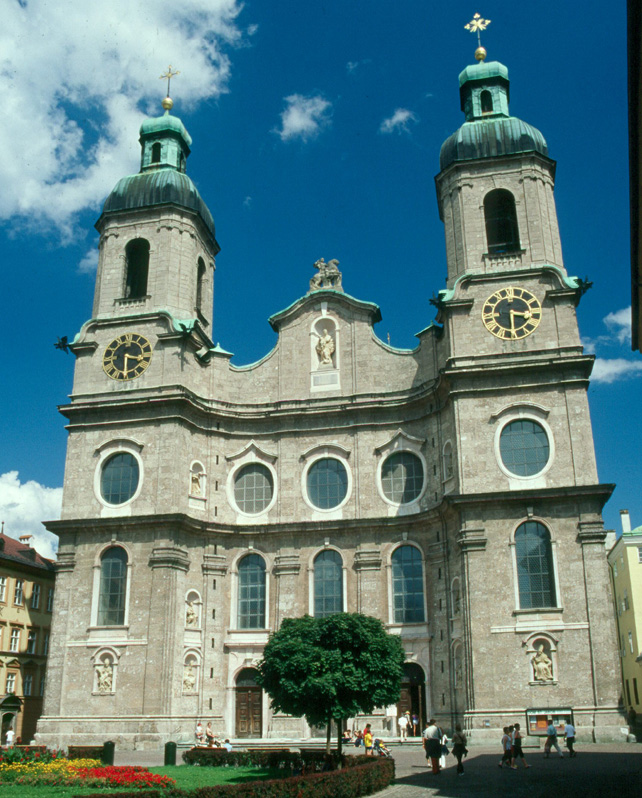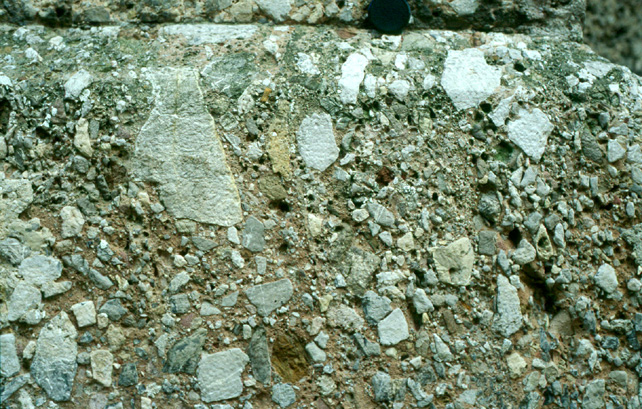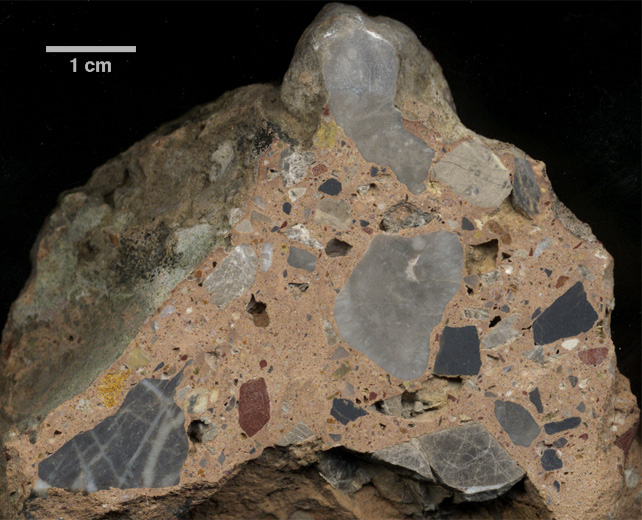

Like many of the older buildings in Innsbruck, the cathedral is built of a Quaternary breccia (shown below - note lens cap at top for scale). The breccia comes from the slopes above Hötting, a town just across the Inn and on the flanks of the northern or calcareous (limestone) Alps. The breccia appears to be a landslide deposit that accumulated during Quaternary glaciation of the Alps. As glaciers temporarily retreated from the Inn Valley, collapses of the steep valley walls dumped masses of limestone chunks onto the sloping sides of the valley. Those masses of limestone debris solidified to make breccias like the one at Hötting. Because the breccia consists of limestone clasts and a muddy matrix, it is easy enough to cut that it can be readily used as building stone. The coarse limestone chunks make the stone visually interesting as well.

The image below shows a cut and polished piece of the Höttinger breccia from an outcrop (probably an old quarry wall) on the Wilhelm Greil Weg above Hötting. The gray pieces are all limestone in a reddish-brown fine matrix. Note the piece at lower left with the criss-crossing light gray veins. It was deposited as a sediment about 200 million years ago in the Triassic or Early Jurassic, fractured in the stress and strain of the building of the Calcareous Alps about 40 million years ago, exposed and eroded off the Alps and engulfed in a mudslide a few tens of thousands of years ago, and exposed again by quarriers a few hundred years ago as they took out stone for old buildings like the Jakobsdom.
